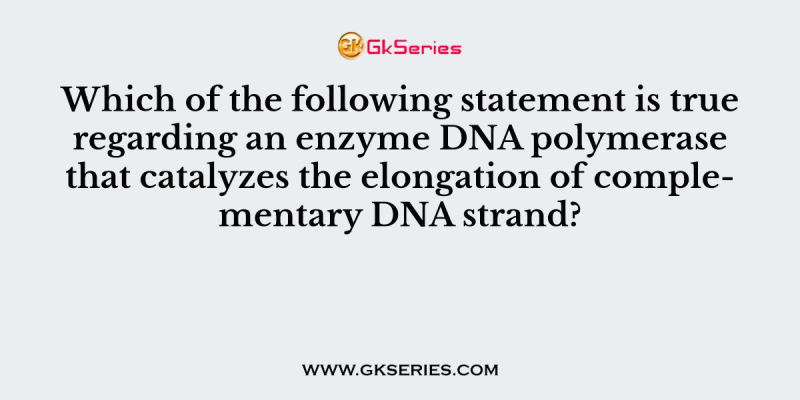
Which of the following statement is true regarding an enzyme DNA polymerase that catalyzes the elongation of complementary DNA strand?
READ MORE +
Which of the following statement is true regarding an enzyme DNA polymerase that catalyzes the elongation of complementary DNA strand?
READ MORE +
The DNA polymerase is a template-directed enzyme that synthesizes new complementary strand from a parent strand but it requires the existing short nucleotide sequence for its elongation. Which of the following enzyme is required for the synthesis of this primer?
READ MORE +
DNA polymerase III holoenzyme possesses
READ MORE +
DNA replication is bidirectional and anti-parallel. Which of the statement is FALSE regarding the DNA replication?
READ MORE +
Q. As the two strands of the double helix are separated, the positive supercoiling interferes with the further unwinding of DNA. Which of the following enzyme makes a break in a strand of DNA to release the supercoiling and facilitate the replication to occur?
READ MORE +
Which of the following enzyme has a unique ability to introduce positive and negative supercoiling of the DNA and it is the target for antibacterial agents such as ciprofloxacin/quinolones?
READ MORE +
The short strand of ........ primer is required for the replication of DNA
READ MORE +
Which of the followings are the characteristic feature of DNA replication?
READ MORE +
In prokaryotes, DNA replication begins at a single site that is rich in AT nucleotide sequence, where two strands unwind and separate. This ATP dependent process catalyzed by a protein
READ MORE +
The DNA replication occurs in a semi-conservative manner which means
READ MORE +
Q. Aminoglycoside antibiotics such as kanamycin, tobramycin, neomycin are known inhibitors of DNA synthesis. It contains a cyclitol ring linked to a five or six membered sugars by glycosidic bonds. These antibiotics are
READ MORE +
Q. The Chargaff rules state that the number of purines and pyrimidines are equal (A+G = T + C)in any double-stranded DNA molecules. Watson and Crick later solved the structure of DNA and nitrogen base pairings. Which of the following base pairing rule is true:
READ MORE +